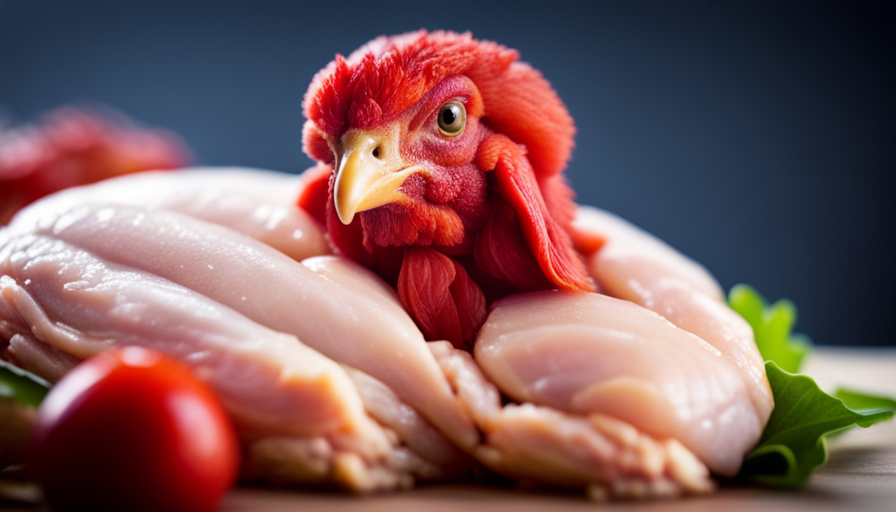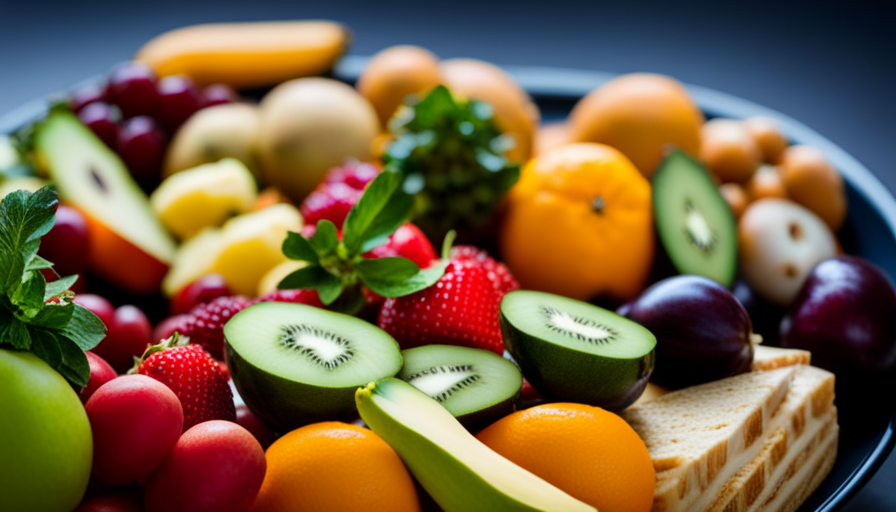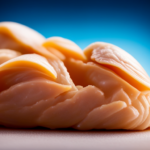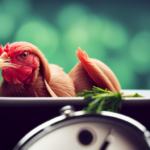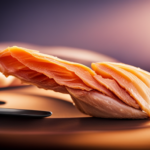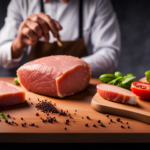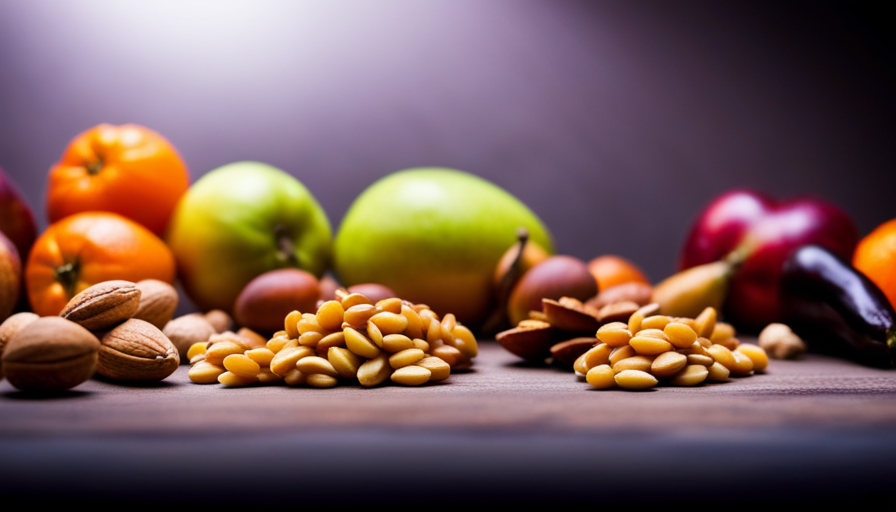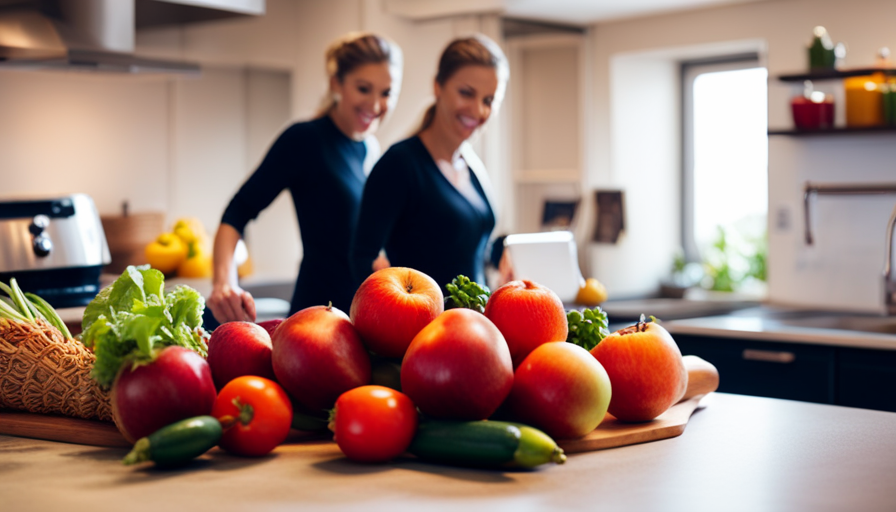Are you risking your health by playing a risky game with raw chicken? It’s important to acknowledge the harsh truth: uncooked poultry is a serious risk for foodborne illness, just waiting to cause a major case of food poisoning.
The consequences of your negligence can be stomach-churning – quite literally. Foodborne illnesses are no laughing matter, and raw chicken is a prime culprit. So, how long does it take for this hazardous feast to wreak havoc on your body? Brace yourself, my friend, for the answer may make you squirm.
The onset of symptoms from consuming undercooked chicken can vary, but typically ranges from a mere few hours to a gut-wrenching 48 hours. Don’t let your reckless cooking become a recipe for disaster.
In this article, we will delve into the dangers of undercooked chicken, explore the symptoms of foodborne infections, and arm you with the knowledge to prevent such a stomach-churning ordeal. So grab your apron, sharpen your knives, and let’s dive into the world of raw chicken food poisoning.
Key Takeaways
- Symptoms of consuming undercooked chicken can appear within a few hours to 48 hours.
- Proper food handling and preparation techniques are crucial to prevent foodborne illnesses.
- Cooking chicken thoroughly to an internal temperature of 165°F (74°C) is necessary to kill harmful bacteria.
- Seeking medical attention promptly can help alleviate symptoms and prevent complications.
Understanding Foodborne Illnesses
Understanding foodborne illnesses is crucial for preventing and treating them effectively. By understanding the causes and symptoms of these illnesses, you can take the necessary precautions to ensure food safety.
One of the main causes of foodborne illnesses is bacterial contamination. Bacteria such as Salmonella, Campylobacter, and E. coli can contaminate food, especially raw chicken, and cause illness when consumed.
To prevent foodborne illnesses, it’s important to practice proper food handling and preparation techniques. This includes washing your hands thoroughly before and after handling raw chicken, using separate cutting boards and utensils for raw and cooked foods, and cooking chicken to the appropriate internal temperature. Additionally, it’s crucial to store raw chicken at the proper temperature to prevent bacterial growth.
Understanding bacterial contamination is also key in preventing foodborne illnesses. Bacteria can be present on raw chicken even before it reaches your kitchen, so it’s important to handle and store it properly. Cross-contamination can occur when raw chicken juices come into contact with other foods, utensils, or surfaces, so it’s essential to clean and sanitize any areas that may have been contaminated.
By understanding foodborne illness prevention and the risks associated with bacterial contamination, you can take the necessary steps to protect yourself and others from getting sick. Remember, proper food handling and preparation techniques are essential for ensuring food safety and preventing the spread of foodborne illnesses.
Common Causes of Food Poisoning
To truly grasp the breadth of causes for this gut-wrenching affliction, let’s delve into the various culprits behind the dreaded stomach turmoil. Food poisoning can be caused by a range of factors, but the most common cause is the presence of harmful bacteria in food. Understanding bacteria and how they can contaminate our food is crucial in preventing foodborne illnesses.
Here are five key points to consider:
- Cross-contamination: When bacteria from raw meat, poultry, or seafood come into contact with other foods, utensils, or surfaces, it can lead to contamination and subsequent food poisoning.
- Improper food handling: Failing to wash hands, not storing food at the correct temperature, and using expired ingredients can all contribute to bacterial growth and food contamination.
- Inadequate cooking temperatures: Insufficiently cooking foods, especially meats, can leave harmful bacteria alive and capable of causing illness.
- Contaminated water: Consuming water that’s contaminated with bacteria can also lead to food poisoning, as it can be used to wash produce or prepare food.
- Unsanitary food preparation environments: Restaurants or kitchens that don’t maintain proper cleanliness and hygiene practices can become breeding grounds for bacteria, increasing the risk of food contamination.
By understanding these factors and practicing safe food handling, we can greatly reduce the chances of falling victim to the unpleasant effects of food poisoning.
Symptoms of Foodborne Infections
One way to truly understand the severity of foodborne infections is by recognizing the telltale symptoms that can leave you feeling absolutely miserable. When it comes to food poisoning from raw chicken, the onset of symptoms can vary depending on the specific type of bacteria involved.
Generally, symptoms can appear anywhere from a few hours to a few days after consuming contaminated chicken.
The most common symptoms of foodborne infections include nausea, vomiting, diarrhea, abdominal pain, and fever. These symptoms can range from mild to severe and can last for several days. In some cases, dehydration may occur due to the excessive fluid loss from vomiting and diarrhea.
If you suspect that you have food poisoning from raw chicken, it’s important to seek medical attention. A healthcare professional can evaluate your symptoms, provide appropriate treatment, and help prevent further complications. They may also recommend laboratory tests to identify the specific bacteria responsible for your infection.
Recognizing the symptoms of foodborne infections is crucial in understanding their severity. If you experience symptoms after consuming raw chicken, don’t hesitate to seek medical attention for proper diagnosis and treatment.
The Dangers of Undercooked Chicken
Beware of the risks that come with consuming undercooked chicken, as it can unleash a host of dangerous bacteria that lurk within. To ensure your safety, it’s crucial to cook chicken thoroughly. Here are four reasons why:
-
Salmonella: Undercooked chicken is a common source of salmonella infection. This bacteria can cause symptoms like diarrhea, vomiting, and abdominal pain. In severe cases, it can lead to hospitalization and even death.
-
Cross-contamination: When undercooked chicken comes into contact with other foods, it can transfer harmful bacteria, such as Campylobacter or E. coli. This can happen through utensils, cutting boards, or even your hands. Proper cooking kills these bacteria and reduces the risk of cross-contamination.
-
Antibiotic resistance: Consuming undercooked chicken can contribute to the development of antibiotic-resistant bacteria. These superbugs can pose a significant threat to public health, as they’re difficult to treat with standard antibiotics.
-
Foodborne illnesses: Inadequately cooked chicken has been linked to various foodborne illnesses, including gastroenteritis and food poisoning. These can cause symptoms such as nausea, fever, and stomach cramps, making you feel miserable for days.
To protect yourself and your loved ones, make sure to cook chicken thoroughly until it reaches an internal temperature of 165°F (74°C). This’ll help kill harmful bacteria and ensure a safe and enjoyable meal.
Timeframe for Onset of Symptoms
Did you know that the timeframe for experiencing symptoms after consuming undercooked chicken can be surprisingly short? The onset time for food poisoning caused by raw chicken can vary, but it typically ranges from 1 to 48 hours after ingestion. This means that you may start feeling sick within a day of eating undercooked chicken.
However, it’s important to note that the duration of symptoms can also vary depending on the individual and the severity of the infection. Symptoms of raw chicken food poisoning usually include stomach cramps, nausea, vomiting, and diarrhea. In some cases, fever and muscle aches may also be present. These symptoms can last anywhere from a few hours to several days.
It’s crucial to seek medical attention if you experience severe or prolonged symptoms, as complications such as dehydration can occur.
To prevent food poisoning from raw chicken, it’s essential to cook it thoroughly. The internal temperature of the chicken should reach at least 165°F (74°C) to kill any harmful bacteria. Using a food thermometer can help ensure that the chicken is cooked to the proper temperature. Additionally, practicing good hygiene, such as washing hands and surfaces that come into contact with raw chicken, can further reduce the risk of contamination.
Remember, safety first when it comes to handling and cooking raw chicken to avoid any unpleasant consequences.
Seeking Medical Attention
Seeking medical attention promptly can significantly alleviate the symptoms and ensure a speedy recovery. When it comes to food poisoning from raw chicken, it is important to understand that the severity of symptoms and the duration of illness can vary from person to person. While some individuals may experience mild symptoms that resolve within a few days, others may develop more severe symptoms that require medical treatment.
If you suspect that you have contracted food poisoning from raw chicken, it is advisable to consult a healthcare professional. They can provide a proper diagnosis and recommend appropriate medical treatment. In some cases, antibiotics may be prescribed to treat the infection and prevent complications.
Complications from raw chicken food poisoning can include dehydration, which can occur due to vomiting and diarrhea. Severe cases of food poisoning can lead to hospitalization, especially in vulnerable populations such as young children, older adults, and individuals with weakened immune systems.
To help your healthcare provider make an accurate diagnosis, it is important to provide them with details about your symptoms, including when they started and any other relevant information. Seeking medical attention promptly can help mitigate the symptoms and prevent any potential complications associated with raw chicken food poisoning.
Preventing Food Poisoning
Taking proper precautions can help you avoid the unpleasant consequences of consuming contaminated food. When it comes to preventing food poisoning from raw chicken, following safe food handling practices is essential. Here are some key steps to keep in mind:
-
Properly store raw chicken: Store raw chicken in the refrigerator at or below 40°F (4°C) to prevent bacterial growth. Keep it in a leak-proof container on the bottom shelf to avoid cross-contamination with other foods.
-
Separate raw chicken from other foods: Use separate cutting boards, utensils, and plates for raw chicken to prevent the spread of bacteria. Wash your hands thoroughly after handling raw chicken to avoid contaminating other surfaces.
-
Cook chicken thoroughly: Ensure that chicken reaches an internal temperature of 165°F (74°C) to kill any harmful bacteria. Use a food thermometer to check the temperature.
-
Avoid cross-contamination: Clean and sanitize countertops, cutting boards, and utensils after each use. Avoid using the same utensils or plates for raw and cooked chicken to prevent bacterial transfer.
By following these simple guidelines for preventing contamination and practicing safe food handling, you can greatly reduce the risk of food poisoning from raw chicken. Stay vigilant and prioritize food safety to protect yourself and your loved ones.
Proper Handling and Cooking of Chicken
Properly handling and cooking chicken is absolutely crucial in ensuring a delicious and safe meal experience. When it comes to cooking chicken, one of the most important factors is ensuring it reaches the proper cooking temperature. The internal temperature of chicken should reach 165°F (74°C) to kill any harmful bacteria present, such as salmonella. Using a meat thermometer is the best way to accurately measure the temperature.
To prevent cross-contamination, it’s important to separate raw chicken from other foods. This means using separate cutting boards, utensils, and plates when handling raw chicken. Washing hands thoroughly with soap and water before and after handling chicken is also essential.
When cooking chicken, it’s important to use proper cooking methods. Grilling, baking, or frying chicken until it’s no longer pink and the juices run clear is a good indication that it’s cooked through. Avoiding undercooked chicken is crucial to prevent food poisoning.
By following these guidelines, you can ensure that your chicken is cooked to a safe temperature and prevent cross-contamination. Remember, proper handling and cooking of chicken is essential for a delicious and safe meal.
Safe Storage and Refrigeration Practices
Ensure your chicken stays fresh and safe by storing it properly in the refrigerator. Proper storage and refrigeration practices are essential to prevent the growth of harmful bacteria and reduce the risk of foodborne illnesses. Here are some tips to help you safely store your raw chicken:
-
Keep it cold: Store raw chicken in the coldest part of your refrigerator, which is usually the bottom shelf. The temperature should be set below 40°F (4°C) to inhibit bacterial growth.
-
Separate and seal: Prevent cross-contamination by placing raw chicken in a leak-proof container or sealed plastic bag to prevent juices from dripping onto other foods. Keep it separate from ready-to-eat foods, such as fruits and vegetables.
-
Use it within two days: Raw chicken should be consumed or cooked within two days of purchase. If you don’t plan on using it within that time frame, consider freezing it to maintain its freshness for a longer period.
-
Thaw safely: If you need to thaw frozen chicken, do it in the refrigerator or using the defrost function on your microwave. Avoid thawing at room temperature, as this can promote bacterial growth.
By following these safe storage and refrigeration practices, you can keep your raw chicken fresh and minimize the risk of food poisoning. Remember, it’s crucial to handle and cook chicken properly to ensure the safety of you and your loved ones.
Importance of Food Safety Education
Educating yourself about food safety is vital in order to develop a strong foundation of knowledge and skills that will safeguard the health of individuals and their loved ones.
It is important to stay informed about food safety regulations and the importance of hand hygiene.
Food safety regulations are put in place to ensure that food is handled, stored, and prepared in a way that minimizes the risk of contamination and foodborne illnesses.
By being aware of these regulations, you can take the necessary precautions to prevent food poisoning. This includes properly storing raw chicken, keeping it separate from other foods to avoid cross-contamination, and cooking it thoroughly to kill any harmful bacteria.
In addition to following regulations, practicing good hand hygiene is crucial in preventing foodborne illnesses. Washing your hands with soap and water before and after handling raw chicken, as well as any other food, helps to remove any potential pathogens that may be present. This simple step can greatly reduce the risk of spreading bacteria and other harmful microorganisms.
By educating yourself about food safety regulations and the importance of hand hygiene, you can protect yourself and your loved ones from the dangers of foodborne illnesses.
Stay informed, follow proper practices, and enjoy your meals with peace of mind.
Frequently Asked Questions
Can food poisoning from raw chicken occur if the chicken is properly cooked?
Yes, food poisoning can still occur from raw chicken even if it’s properly cooked. The bacteria that cause food poisoning, like Salmonella or Campylobacter, can survive on raw chicken. If these bacteria aren’t killed during cooking, they can still make you sick. Symptoms of food poisoning include nausea, vomiting, diarrhea, abdominal pain, and fever. Treatment usually involves supportive care, like staying hydrated and resting. Long-term consequences of food poisoning can vary depending on the individual and the severity of the illness.
What are the long-term effects of food poisoning from raw chicken?
Long-term complications of food poisoning from raw chicken can vary depending on the individual and the severity of the infection. Common long-term effects include digestive issues like irritable bowel syndrome, chronic diarrhea, and food intolerances.
Recovery time can also vary, but most people recover within a few days to a week with proper treatment and rest. It’s important to seek medical attention if symptoms persist or worsen.
Can you get food poisoning from handling raw chicken?
‘Better safe than sorry!’ When it comes to handling raw chicken, food safety is crucial. You can definitely get food poisoning from handling raw chicken if you don’t take proper precautions.
The bacteria on raw chicken, such as Salmonella or Campylobacter, can cause symptoms like diarrhea, vomiting, and abdominal pain.
To prevent illness, always wash your hands, utensils, and surfaces thoroughly after handling raw chicken.
How can cross-contamination be prevented when handling raw chicken?
To prevent cross-contamination when handling raw chicken, follow proper handling techniques. First, always wash your hands thoroughly before and after touching raw chicken. Use separate cutting boards and utensils for raw chicken and other foods, and wash them with hot, soapy water after each use. Store raw chicken in leak-proof containers on the bottom shelf of the refrigerator to prevent drips onto other foods.
These measures help reduce the risk of spreading harmful bacteria and keep your kitchen safe.
Are there any natural remedies or home treatments for food poisoning from raw chicken?
When it comes to food poisoning from raw chicken, natural remedies and home treatments can help alleviate symptoms and promote recovery. Try sipping on ginger tea to soothe your upset stomach or consuming probiotic-rich foods like yogurt to restore the balance of good bacteria in your gut. Additionally, staying hydrated with electrolyte drinks and resting can aid in the healing process.
However, it’s crucial to seek medical attention if symptoms worsen or persist.
How Long Does It Take for Raw Chicken to Cause Food Poisoning?
It depends on various factors, but raw chicken can cause food poisoning within a few hours to a few days. It’s crucial to handle and cook raw chicken properly to avoid raw food toxins exposure. Ensure it reaches a safe internal temperature of 165°F to kill any harmful bacteria.
Conclusion
In conclusion, when it comes to raw chicken food poisoning, time is of the essence. Just like a ticking clock, the onset of symptoms can occur within hours or even days.
However, by following proper food safety practices, like handling and cooking chicken thoroughly, we can prevent this unpleasant experience. Remember, knowledge is power, and by educating ourselves and practicing safe storage and refrigeration, we can ensure our meals are both enjoyable and safe.
Stay informed, stay safe, and happy cooking!

